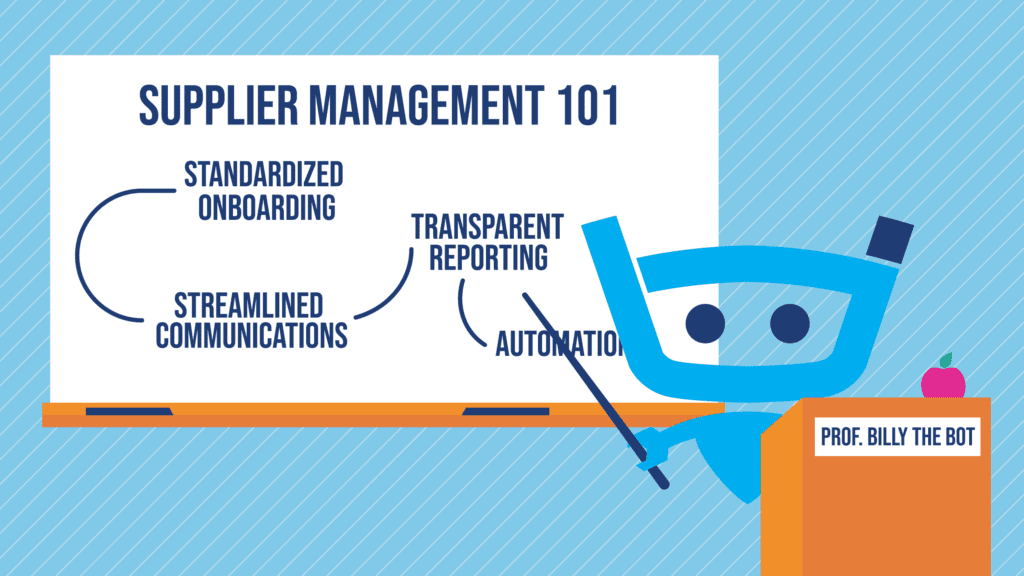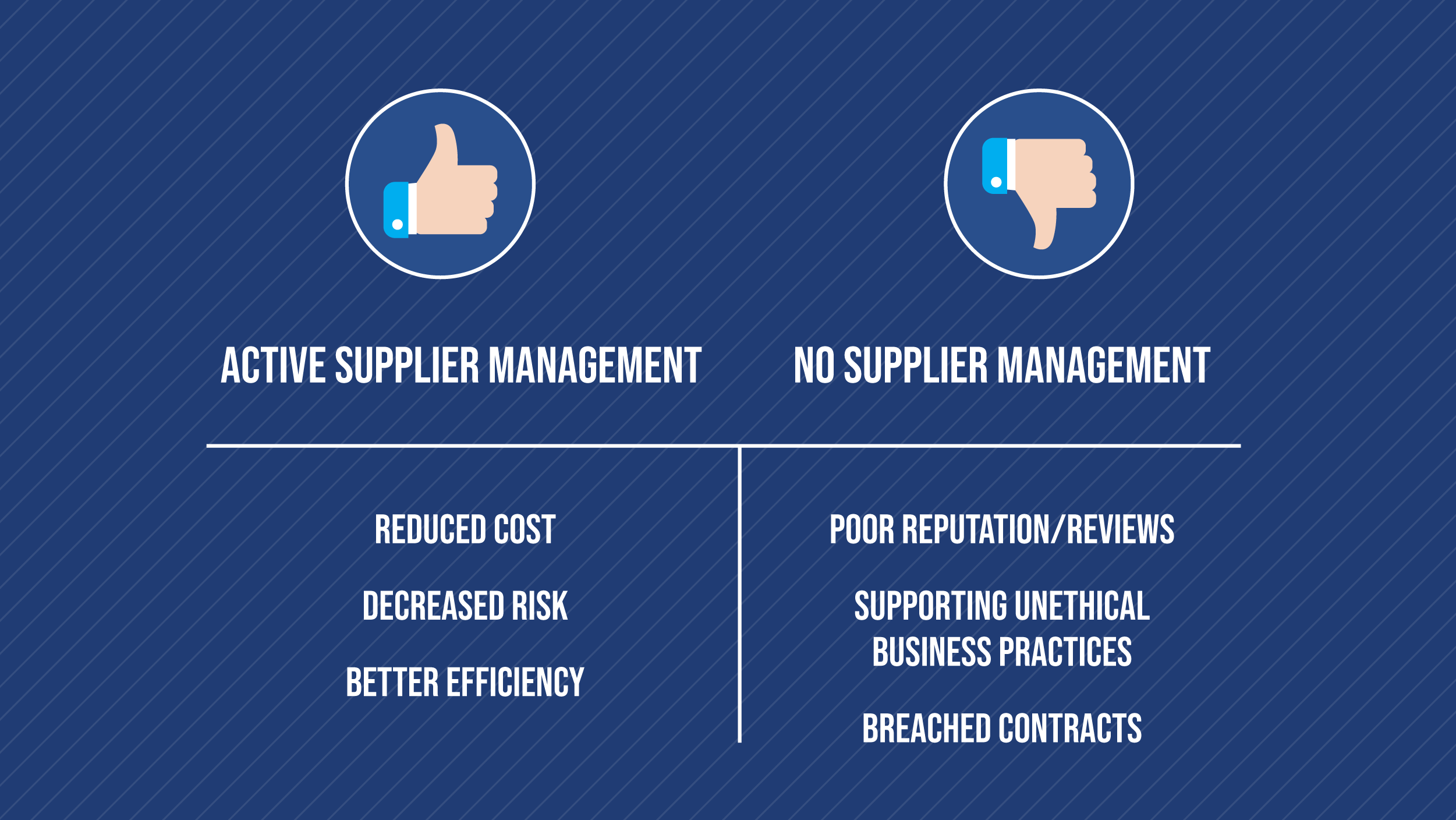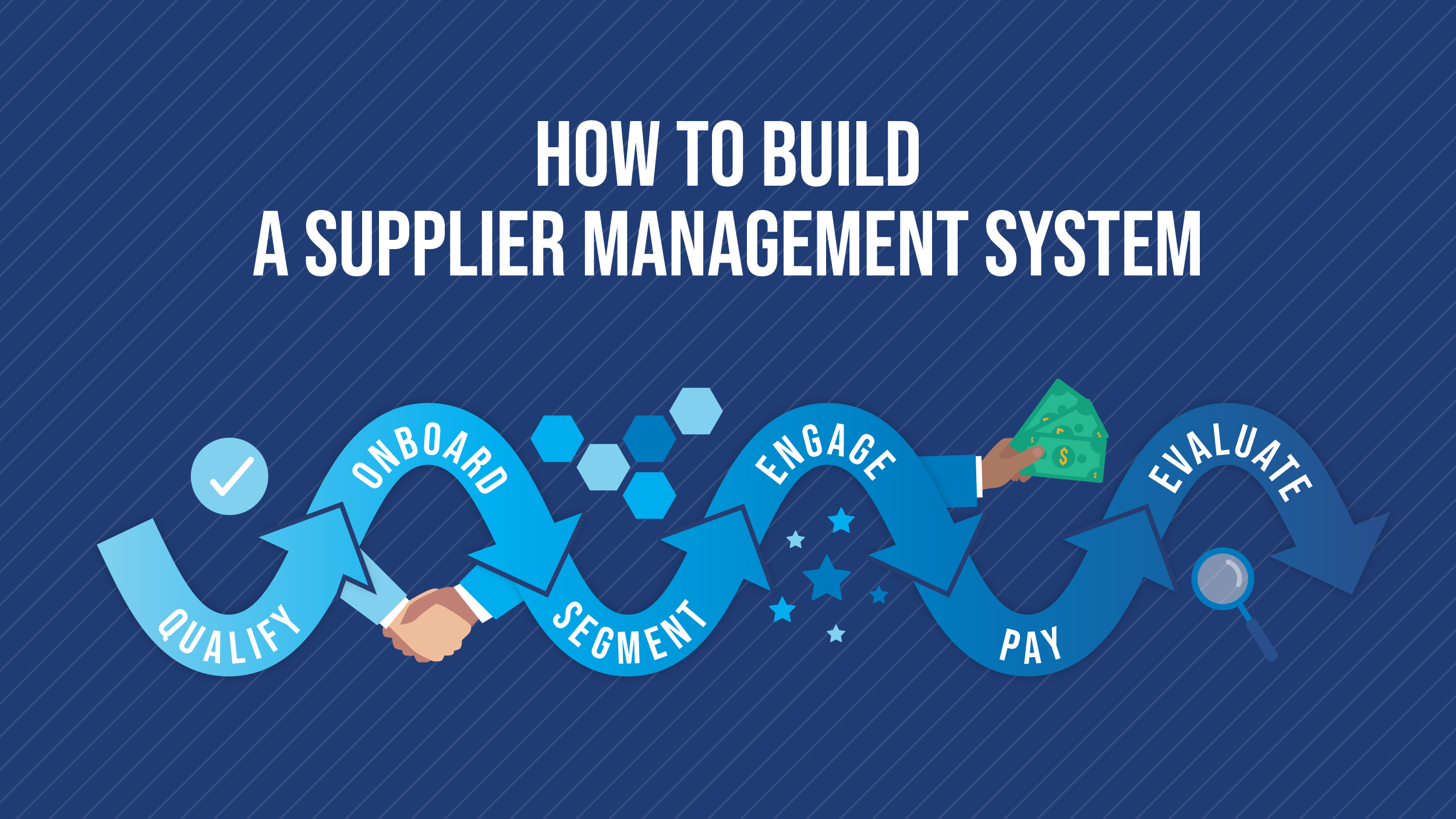How to Turn Supplier Management Into a Competitive Advantage

A good supplier is worth more than the sum of its parts. Many companies can fulfill your bare minimum requirements, some can do it on a consistent basis, but the really good ones can add value beyond merely fulfilling orders. A healthy business relationship with a supplier will grow over time and hopefully grow the bottom line of each organization involved. That’s why supplier management is so crucial.
Taking the time to set expectations, establish clear lines of communication, and collaborating on workflows can pay off big time. In this post we’re going to break down some supplier management basics, explain some key steps in the supplier management process, and provide some tips for getting the most out of your suppliers.
What is Supplier Management?
Supplier management encapsulates all the processes, procedures, and performance reporting between an organization and its suppliers. Basically, it’s the structure of all the effort an organization puts forth to try and attain the maximum value from its suppliers.
When organizations are able to mature from picking a supplier out of the phonebook to a sophisticated system of sourcing, onboarding, engaging, and evaluating the performance suppliers, a few key benefits begin to materialize:
Reduced cost
From early payment discounts to volume pricing, effectively managing your supplier relationships can lead to cost savings in various areas of your contracts. Additionally, constantly switching suppliers incurs indirect costs that can sometimes be more painful than the monetary value.
Decreased risk
Part of active supplier management involves more robust systems that can more easily detect fraud, inaccurate or double payments, and other mistakes. If you reach preferred status with your supplier, you also might have an advantage should scarcity of supply become an issue for them—massively useful during busy times.
Better efficiency
As the business relationship matures and communication improves, organizations can align their long-term goals and start the cycle of continuous improvement. This means fewer unwelcome surprises, delays, and miscommunications. Effective supplier management can have each organization finishing each other’s sentence like a happily married couple.

On the other side of the coin, neglecting your suppliers can have negative effects.
Are you more than 60 days late to pay your suppliers due to a backlog of invoices? Don’t be surprised to hear your reputation tank within your industry or see negative online reviews about your company.
Are you taking a don’t ask, don’t tell approach to your suppliers? Be careful that you don’t end up funding an organization with unethical labor, sourcing, and business practices. Long story short—active supplier management isn’t a luxury for businesses, it’s 100% necessary.
How to Build a Supplier Management System

Odds are most companies already have a system in place for managing suppliers. Of course, if the “system” is just one person managing the relation with an assortment of manual and disconnected processes, it’s not really a system. If you have to start over due to employee turnover, it’s not much of a system.
On the flip side, modern supplier management systems featuring documentation and automation can nearly run themselves with the proper human oversight. The key to building a modern supplier management system is breaking the entire supplier lifecycle into steps. From there, you can document and automate each step to get the custom result you need.
Here is each step in the supplier management process:
Step 1 – Qualification
Who do you want to supply your business and why? The qualification step ensures that you are hiring the most qualified supplier at the best price who can provide the necessary goods and/or services. Ideally, you’ll use a standardized criteria for evaluating potential suppliers and vendors. For more info on the qualification step, check out our related post Vendor Workflows From Procurement to Payment.
Step 2 – Onboarding
Once you’ve selected your new supplier, it’s time to get them into your system. The onboarding process is a two-way street, so both your organization and the supplier will need to exchange information. Again, the more standardized this process is, the better for everyone.
In order to build an efficient onboarding workflow, you’ll need to digitize everything with online forms and electronic signatures. In this way, you can not only limit the errors (vendors will not be able to leave fields blank) you receive, you can also automate certain actions like email notifications based on events like approvals or signatures.
One added benefit of this type of form-based workflow is that you can sync your criteria with the application process. This allows you to disquality vendor applications that do not meet your criteria, saving your company manual reviews of bad-fit vendors.
Step 3 – Segmentation
Not all suppliers are created equal, nor do they supply the same things. There are virtually endless ways to tag and segment your suppliers, but the commonly used Kraljic Matrix uses four quadrants:
- Commodity
- Strategic
- Standard
- Key
You might also want to segment your suppliers based on more standard metrics like amount spent, volume of goods supplied, product complexity, and etc.
However you decide to segment your suppliers, the key thing to understand is the rationale for this segmentation steers the management strategy—suppliers who are critical to your operations need higher levels of engagement. Segmentation can also provide insight into your supply base and help you calculate your exposure to risk.
Step 4 – Engage
Now it’s time to work! You can’t evaluate performance if you don’t engage, so close collaboration with your suppliers creates a mutually beneficial business relationship.
Step 5 – Pay
Once the transaction is concluded, or whatever the payment terms in your contract stipulate, it’s time to pay your suppliers. From procurement to payment, the general steps usually look something like this:
- Create purchase requisition
- Obtain purchase requisition approval
- Create purchase order
- Vendor accepts purchase order
- Goods or services are delivered
- Invoices get processed
- Payment is issued
Note: If you’re using procure-to-pay automation, your processes and controls can be maintained, but may look slightly different. For a deep dive into that specific workflow, we recommend reading our guide on procure-to-pay automation.
Step 6 – Evaluate
This is the last and arguably most important step in the supplier management process. Regular evaluations will ensure suppliers are in compliance with your contract, but also give you insight into their performance in other key areas such as delivery time, price, production, quality, and service.
Pro tip: Rather than manually evaluating supplier performance on an ad hoc basis, consider building out a supplier dashboard that can provide real-time data to help you gauge their performance.
In a competitive, globalized economy, organizations would do well to continually enhance their supplier management practices, and technology is one of the best ways to do that. The right technology stack adds several benefits to this entire process, including:
- Accountability – Each workflow is assigned to a specific person with measurable tasks
- Efficiency – A database of approved suppliers shortens the selection process
- Transparency – Real-time dashboards keep your team and your suppliers updated
- Automation – Create a waterfall of tasks, notifications, and communications moving constantly
At a minimum, your technology stack has to cover these areas of supplier management:
- Automated approval workflows
- Customizable and real-time dashboards
- Invoice matching
- Vendor portals
As part of our robust accounts payable (AP) automation platform, Stampli has several features specifically designed to support supplier management processes.
For example, our AP automation platform comes with an optional vendor portal which allows organizations to share information with vendors in a transparent and real-time dashboard where they can see things like their bill statues and invoices inquiries and also have the ability to participate in two-way communications. This makes invoice processing, invoice approvals, invoice management, and business-to-business (B2B) payments management a breeze while also serving as a reporting tool for key AP metrics.
This helps our customers reduce the communications overhead by providing online accessibility where the status of an invoice can be viewed 24/7.
Interested in learning more? If you’re looking to see how effortless supplier management can be, book a demo of our leading AP automation platform today!
